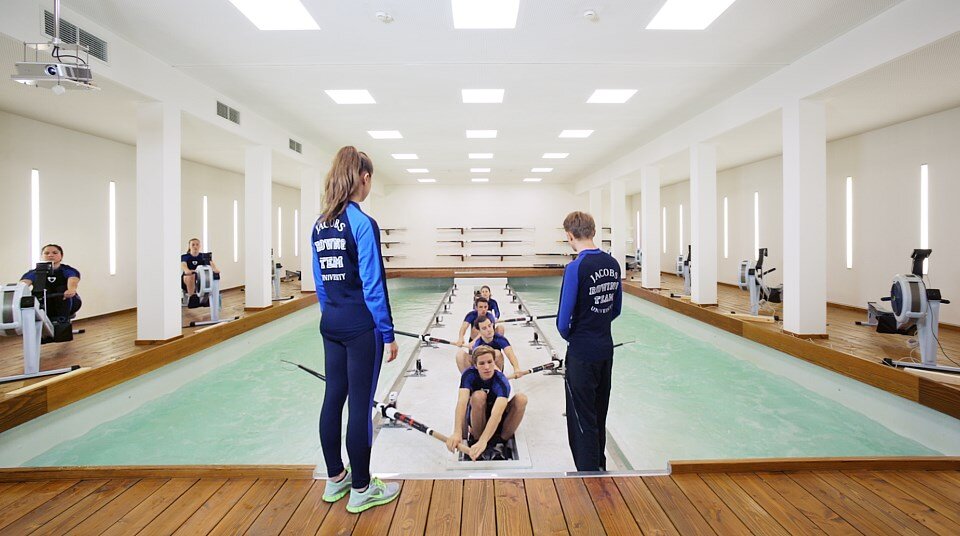
The very first time man conquered the seas, floating through the endless waters aboard a wooden house, he knew it was start of something far greater than it seamed back then. And he was right: fast-forward centuries, and man has taught himself how to stitch close the great distances between two land masses and there’s nothing but potential for everything from this point onwards. While many talk about building underwater, high-powered cities, some just want to look at the recreational side of shipping, rowing being one of them.
The Jacobs University Sports and Convention Center holds one of the most advanced indoor rowing facilities to be found in Northern Bremen. It features a life-sized in-door rowing tank, which can facilitate up to eight rowers. The rowing facility, furthermore, has huge mirrors placed on either side of it so that the rowers can correctly calculate the rhythm their partners have adapted. Rowing has been a professional sports for a good number of decades now.
Although only introduced into the Olympics in 1976 for both men and women, the sports has been there for a while now. Professional watermen organized races (regattas) on the River Thames in London, England, in the early 17th century, which gave rise to modern rowing as a competitive activity. The London Guilds and Livery Companies frequently presented rewards. With the establishment of "boat clubs" at British public schools at the end of the 18th century, amateur competition began. In the early nineteenth century, clubs were created at colleges in Oxford and Cambridge. In England, Germany, and the United States, public rowing clubs were forming at the same time. Yale College founded the first American college rowing club in 1843.
Rowing is divided into two disciplines: sculling and sweep rowing, to discuss the technical aspects of the sport. Each rower in sculling has two oars, one in each hand, but in sweep rowing, each rower holds one oar in both hands. Athletes can compete in a variety of boat classes, ranging from single sculls for one person to eights, which are shells with eight rowers and a coxswain. There are many different types of courses and racing forms, but most elite and championship level racing takes place on calm water courses that are 2 kilometers (1.2 miles) long and have many lanes marked with buoys.
The Jacobs University rowing team has had its share of competition as well. In 2017, the team met HSBA Hamburg School of Business Administration on the Außenalster. Both men and women participated in four boat classes. While the Hamburg team were at a slight advantage considering they had an Olympic champion in their German Eight Team, Jacobs University teams performed outstandingly well.
At another occasion, in 2015, and this time for a cause for humanitarian, the Jacobs University team participated in the Row2Syria event supporting the Syrian immigrants who had travelled through the fiery Mediterranean Sea to escape their destroyed homes.
The Jacobs University rowing team, on this occasion, had pledged to cover 3078 kilometres - the distance between Bremen and Damascus on ergometers.
To finish, I found it best to quote the French philosopher Jean-Paul Sartre, “Only the guy who isn't rowing has time to rock the boat.”
BY MUHAMMAD SHAHZAIB TAHIR AWAN (PAKISTAN) | CLASS OF 2022
